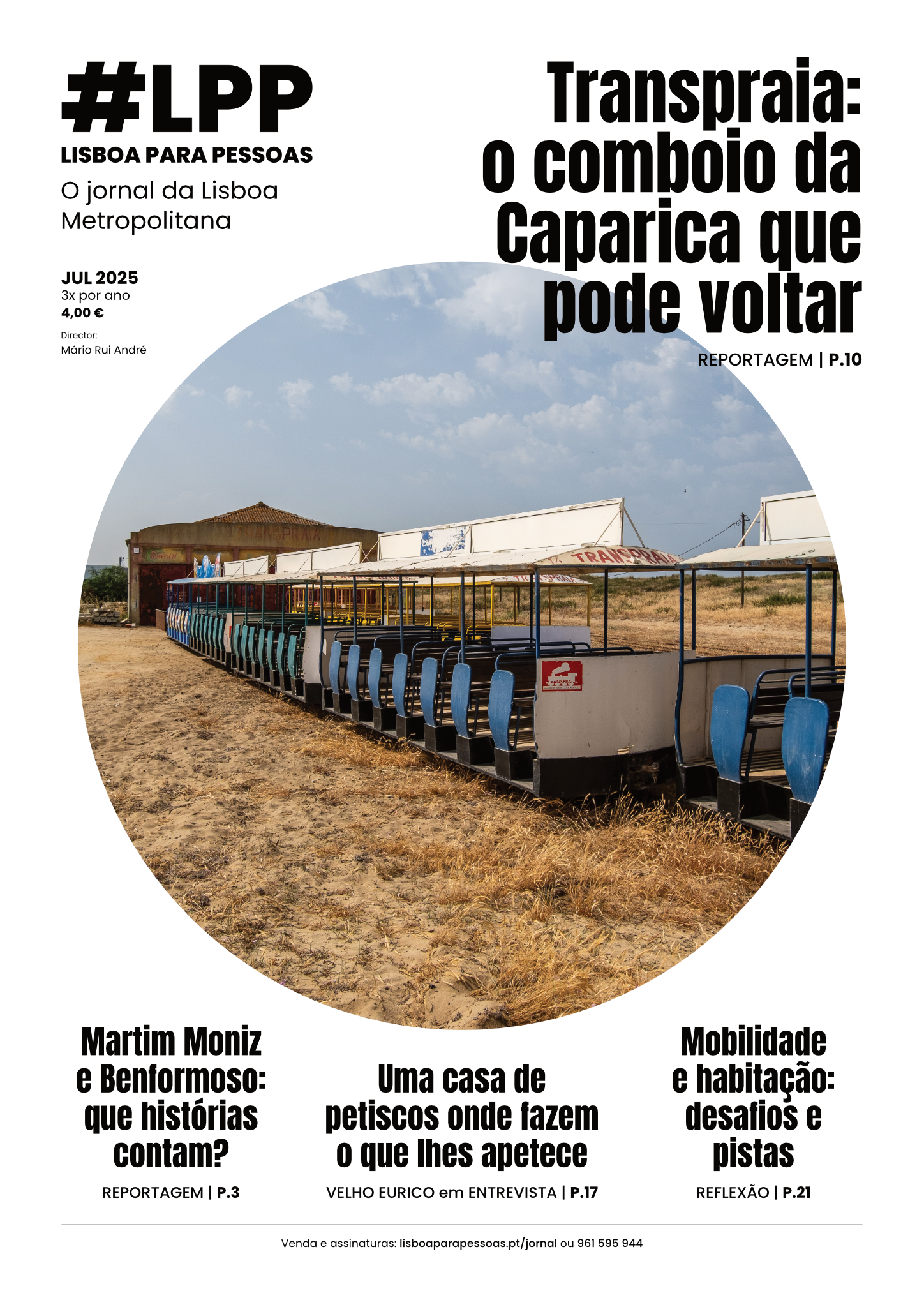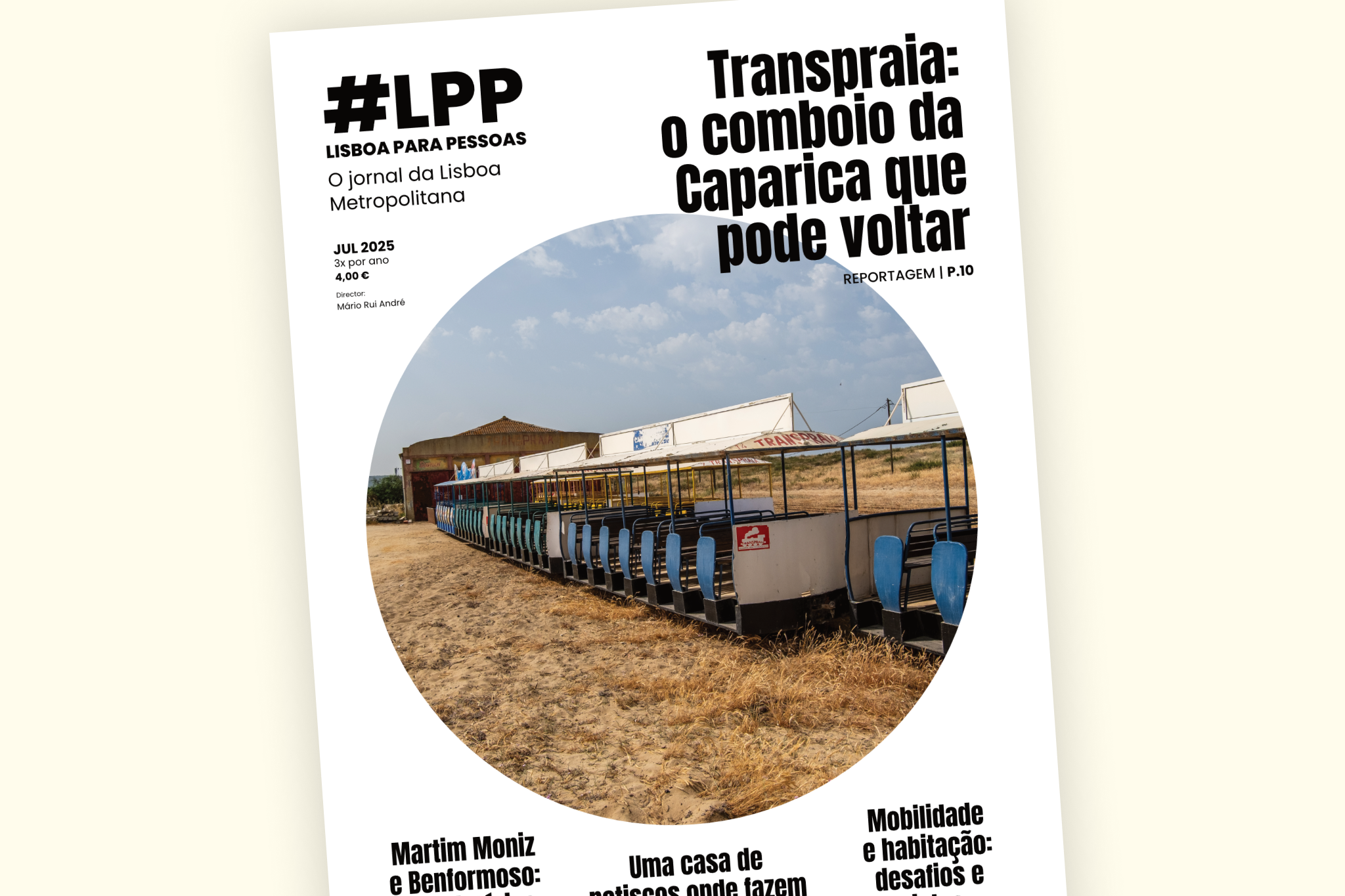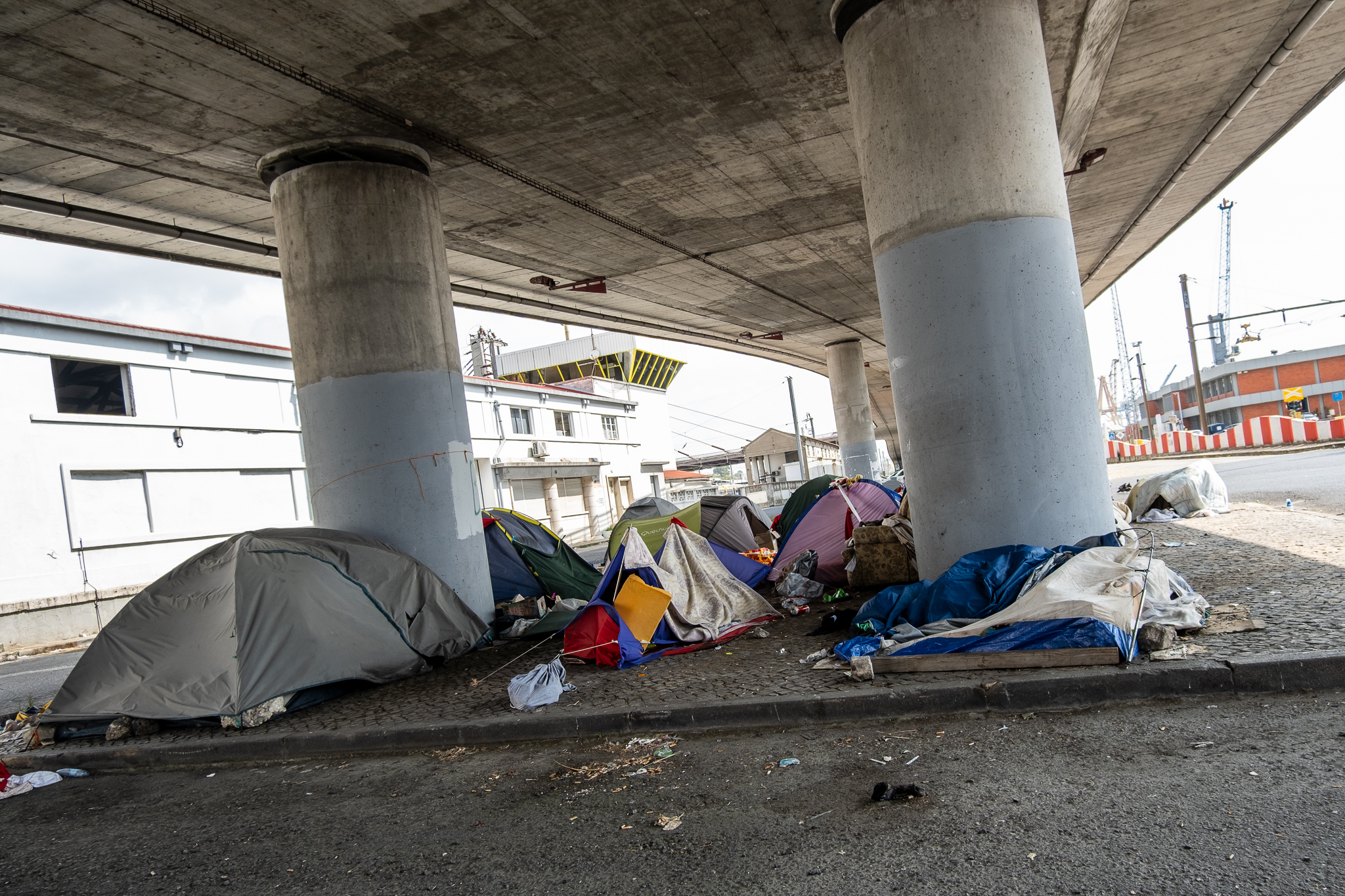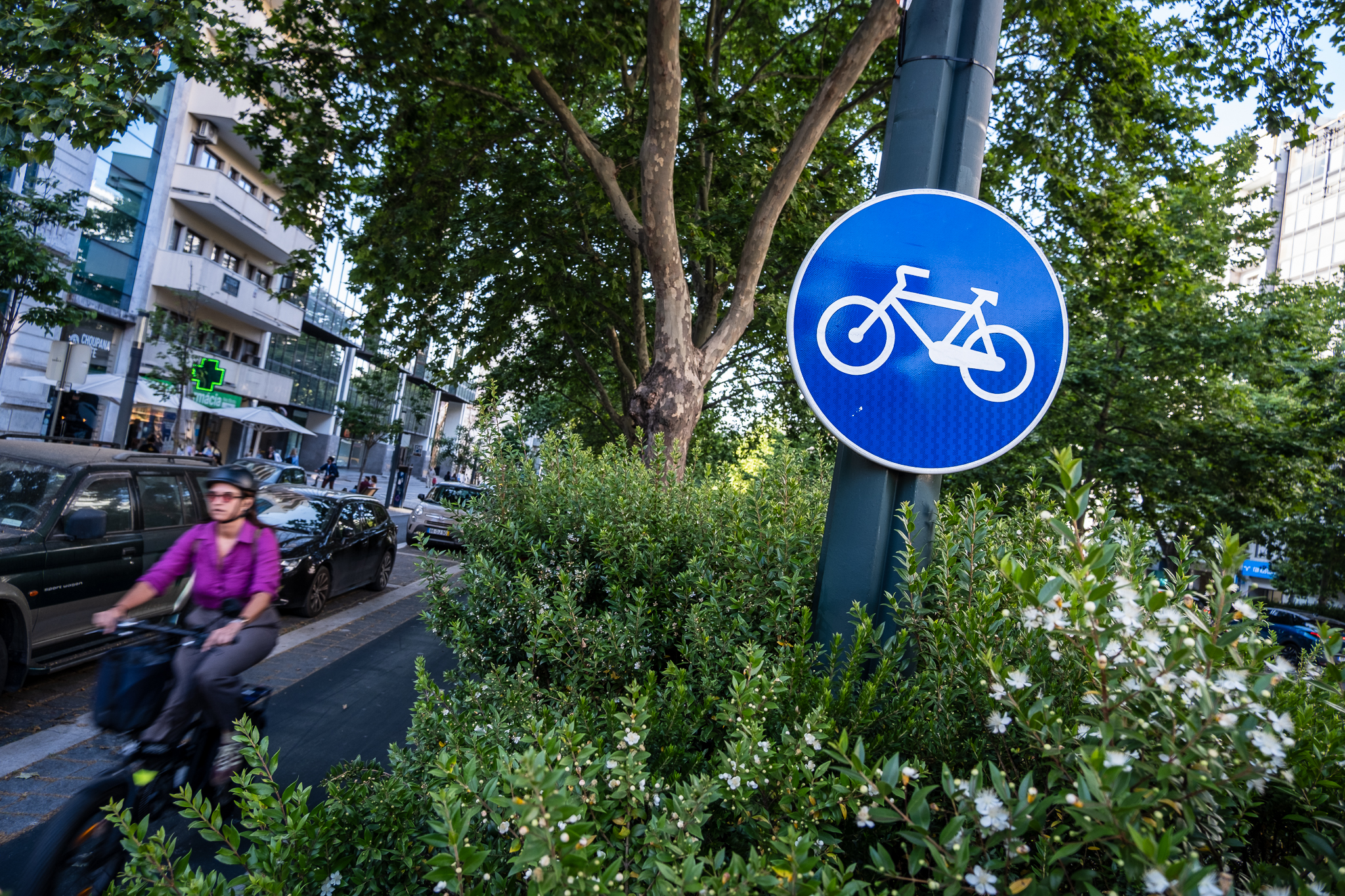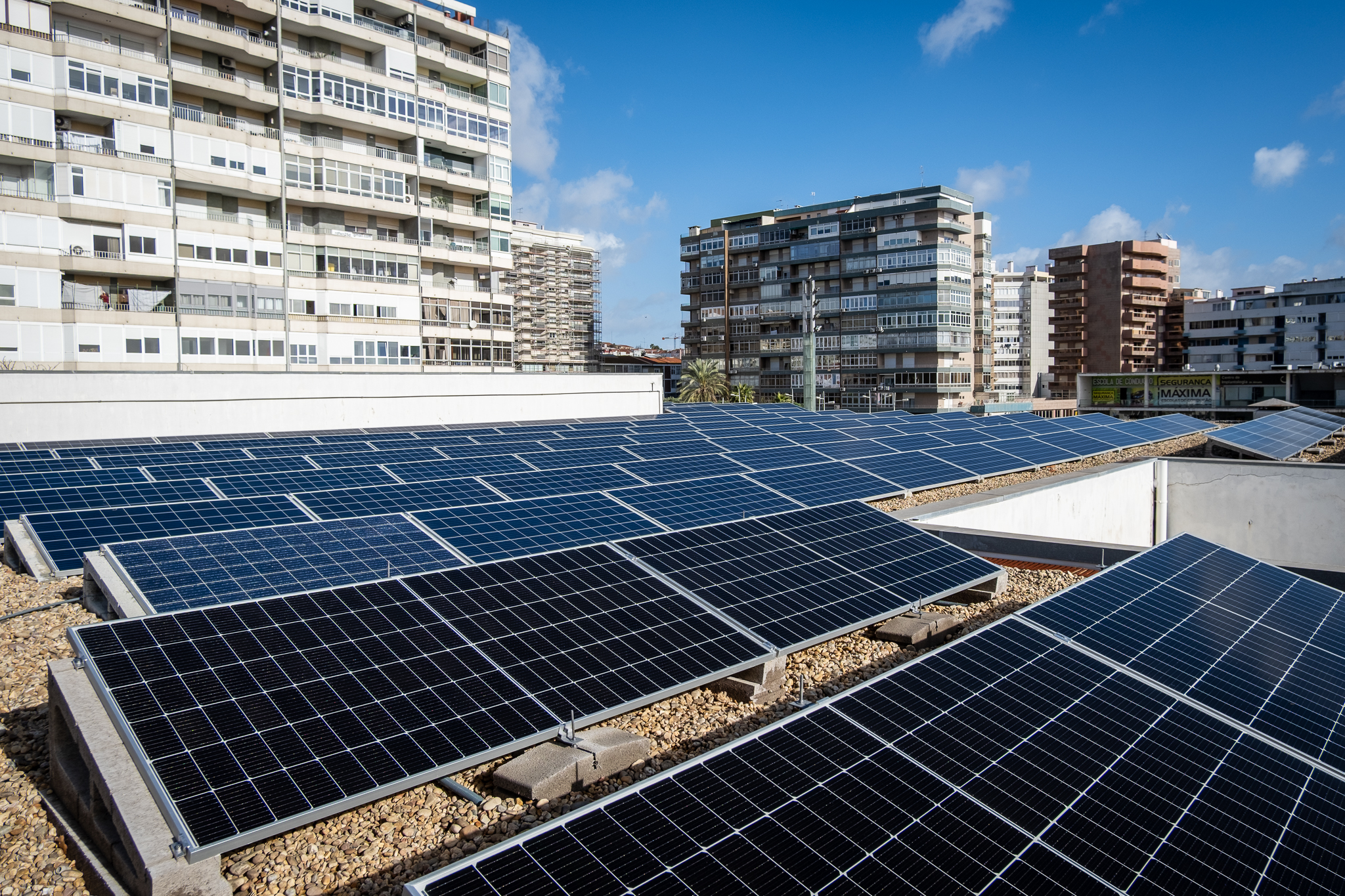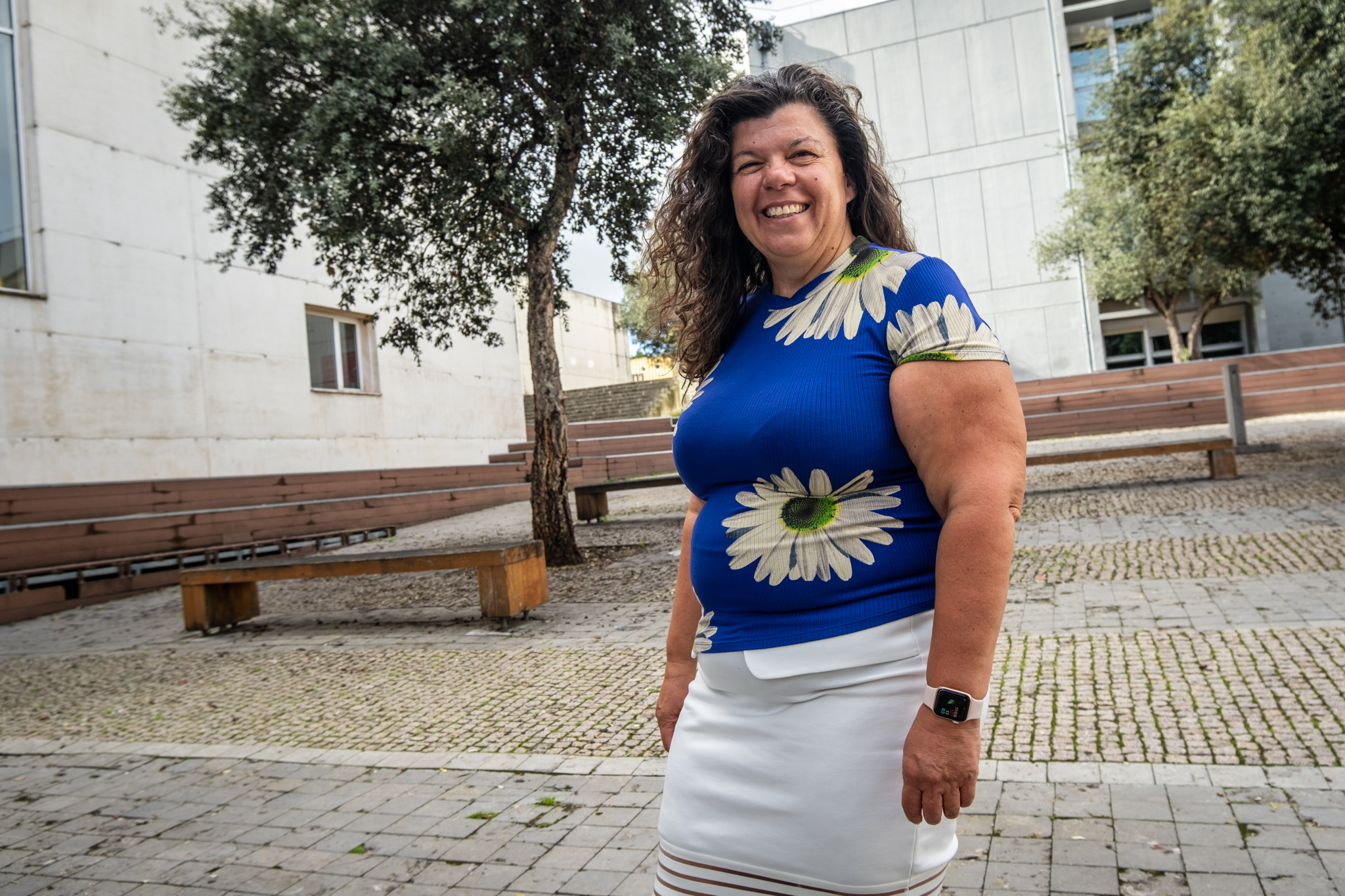German graphic designer Jan Kamensky began during the pandemic to imagine cities without cars, with more people and green on the streets. He doesn't want to be realistic, he wants to make us imagine different streets and squares, and he came to Lisbon to create a "visual utopia".

Jan Kamensky is not an architect or an urban planner or anything like that. He presents himself as a "digital gardener" and started at the beginning of the pandemic to reimagine urban space, starting from his hometown, Hamburg. "The project started as an experiment at the beginning of the pandemic. The streets were empty and for me that was an inspiration." Taking photos and videos, and using his graphic design skills, Jan has been animating squares and streets in different cities, changing cars for people, streetcars, bicycles, trees... He came to Lisbon this weekend to produce in the Portuguese capital one of his "visual utopias".
"We have to be polite. Convincing the other person is much more difficult when you are emotional."
Jan was invited to Lisbon by the activist collective Lisbon Possibleto which the environmental association ZERO got together. Among themselves, they divided the costs, including the renumeration of the work that gardener The German book that Jan will produce in Lisbon and that should be published until the end of the year. This Sunday, at the end of the day, Lisboa Possível and ZERO promoted a meeting with Jan and the community at the Biblioteca Municipal dos Coruchéus, in Alvalade - about two dozen people showed up, interested in listening to Jan, getting to know his work and socializing, with beers and a bicycle path cake.

The conversation at the Coruchéus Library, moderated by Ksenia Ashrafullina, one of the faces of Lisboa Possível, lasted more than an hour and was broadcasted on YouTubewhere it can still be seen. At the very beginning of the session, the audience was challenged to close their eyes, imagine a Lisbon street, and describe it in one word: they heard "anxiety", "green", "hot", "injustice", "confusion", or "polluted", for example. Soon after, the exercise was repeated going back 100 years in the imagination, and "Nature" or "people" were some of the words that came up.

For Jan Kamensky, it is hard to imagine cities any other way, the transformation of urban space and transportation systems to prioritize the automobile is "relatively new"started in the 1920s. That is why in his work he tries to show how cities could be. "I know I exaggerate sometimes"he confesses, saying afterwards that his role is not to be realistic - That is the task of engineers. "I want my work to reach car drivers as well, I want them to see [the animations], to smile and maybe start seeing [the city] differently." - he continues.
For you, calm and empathetic relationships in cities, and positive ways to spread the message and encourage imagination are key. "We have to focus on being calm and thinking about solutions. When you are aggressive you don't think about solutions. We have to be polite. Convincing the other person is much more difficult when you are emotional." Giving his example of a recent conflict with a motorist while riding a bicycle, the German shared his mode of interaction. "I stayed calm and tried to explain to him" because he acted wrongly, "and I think he understood". Jan believes that by not maintaining a serene posture, this motorist could take out his frustration the next day by driving even more aggressively. "I train myself to control anger"he said. "We can't fight [another's] anger with our own anger. We have to be polite to the person even if they are not right."
Jan argues that to think of solutions appealing to everyone we cannot continue to separate ourselves between drivers, cyclists, pedestrians, and we have to think beyond these categories in an intersectional way. "It doesn't make sense that separation. That way, we can't find empathy. Not all drivers want to ride in cars. They have to. Sometimes it has to do with feeling safer. And I'm not just talking about women, but also LGBTQI+ people."
"Mobility is the big priority [on city streets], but why?"
Because some people actually have to use the car, the German digital gardener has chosen not to put people inside the vehicles - reinforcing that the idea is not to blame the drivers. "I don't show people in cars. The car is the object." In almost all of their animations, the noisy and polluting vehicles appear to evaporate of squares and streets to be replaced by trees, green spaces, and flowers.
People then appear, along with mobility objects that fit into Jan's vision of the city, such as the bicycle or the streetcar. The noise of the cars is replaced by the noise of birds and conversations; the smoke from the exhaust fumes disappears, and the colors become more vivid; trees and bushes are born, grassy areas, water features, and flowers appear. Diversity is also one of Jan's concerns, who, knowing that "it is difficult to represent all of society"It seeks to mirror this heterogeneity in terms of gender and ethnicity, not forgetting also people with reduced mobility.
Today, streets have become mobility-focused spaces, Jan frames; they are designed for traffic but "can be an extra room" of our homes, where we can interact with neighbors, strengthen feelings of community, or enjoy a different space than the ones we have at our disposal. "Mobility is the big priority, but why?"he rhetorically questioned the audience. Sharing his personal case, Jan made his question more concrete: he lives in Hamburg in a neighborhood "not far from the river" and it succeeds "take the bag and a book" and find that quiet space. "If we don't have a balcony or a backyard, it's important to have a park that we can use and that isn't too far away." The urban streets and squares can also be these refuges of harmony in the middle of the city.

About the reactions to his videos, Jan told that he once received a comment in a Berlin video from a person that he wanted to turn the city into the country. But "why is life sitting in a car and why is flowers, greenery and water being countryside?". Transforming cities must, in his view, start with people and changing individual mindsets. "Change begins in the state of mind"he says. Throughout the session at the Coruchéus Library, the speaker insisted a lot on the idea that if we want to change the city we have to start with the way each one of us thinks.
“Activism begins when we think about things in different ways. Then we become activists. It starts in the mind." For you, we can all be activists without claiming to be, simply by participating in this mindset. "We have to start individually and may be we will inspire others and society." The transformation cycle starts with people, "from below, in the mindset"more than in the politicians who represent us today. "If the mindset changes, people will also change where they place their vote."
A colorful and polluted Lisbon
In the few hours he had been in Lisbon (he arrived on Saturday afternoon), Jan Kamensky said he found a city with "colors" and a "smell" of pollution. But there are more similarities with other cities than differences, he points out. He didn't need much time to conclude that"There is a low priority for pedestrians and reduced mobility"and, jokingly, he was peremptory in stating that "there is a lot of work to do" and that this also means that there is much for him to do, even if his is only at the digital level. At the session in the Library, he showed several works he had done, including a dystopia - "it's the only dystopia I've done" - made for a North American auto event (you can see it below) - and a timelipse (which you can see above).

Jan started at the beginning of the Covid-19 pandemic in March 2020, and since then his work has been crossing borders through Twitter. The public emergency situation confronted us with empty cities, and launched the discussion about modal distribution in cities and the uses given so far to public space. In various corners of the globe, plans were drawn to "rescue" this space from the car, with the pedestrianization of streets, the creation of new squares and the construction of bicycle lanes pop-up. Some cities gave up or slowed down these plans soon after, and with economic deconfinements and resumes the car-centric paradigm gradually returned.
On Sunday during the day, Ksenia accompanied Jan on a tour of Lisbon, and on Monday they continued to walk the streets and squares of the city in search of the ideal location for a "visual utopia." The result will later be published in Vimeo channel e Jan's site, where it is possible to see the remaining animations, and also on the Lisboa Possível and ZERO channels.
The German artist and activist let it be known that getting to Lisbon was not easy, as he stopped flying for environmental reasons. He prefers the train and, from Germany to Lisbon, he had to go through the precarious train connection between Spain and Portugal that forces three or four overflows and it takes 11 hours. "It's not very comfortable [coming by train from Germany] but it's worth it"he said, challenging the audience to make time for the trip and have fun with it if they want to replicate the experience. "Take small steps. It's very important that you enjoy the journey."


